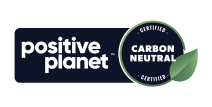There is a lot to think about when running a content marketing campaign, but the most important consideration is how its success can be measured.
If you are struggling to measure the performance of your current efforts, you are not alone, with businesses citing lack of time, vague objectives, and a lack of training in content measurement as reasons for not regularly monitoring performance.
However, in order for your strategy to thrive, you must choose content metrics that align with your overall goals and objectives.
To help, continue reading to discover how you can choose the best key performance indicators to effectively measure the success of your content marketing.
How can I identify which KPIs I should be tracking?
The first step towards tracking the correct KPIs is identifying what you would like to achieve.
Content Marketing Institue states that the most common metrics used to assess content marketing performance are conversions, email engagement, website traffic, blog engagement, and social media analytics.
In order to find out what KPIs you should be tracking; you need to delve a little deeper and assess your content’s current performance using tools such as Google Analytics and SEMrush.
These tools can help you identify what is working well and what areas may need improvement, as well as provide in-depth insights into how users are responding to your content.
After identifying the areas, you want to improve, you can create structured goals using the S.M.A.R.T. method.
For example, you may have found that your website’s engagement is lacking, so you could set a goal to improve it by 20% by Q2.
Once you have set your goals, you can then focus on the KPIs that are going to help you achieve them.
To save you time, we have compiled a list of content metrics and the KPIs you should be measuring to help your content marketing achieve overall success.
Content marketing metrics: Engagement KPIs
A key measurement of how your content is performing is how it is being received and resonated with by your audience.
Find out how you can measure this using the below metrics:
Average session duration
This is an important key performance indicator when trying to improve and measure engagement with your content.
The average session duration essentially tells you how much time people are spending exploring your content.
It is important to remember that this time can vary, as your content will vary in length from page to page.
A longer average session time indicates that users are engaged and find value in your content.
However, if you find that a blog with a word count of 1,500 is only achieving an average session duration of 20 seconds, it is highly likely that your content is not relevant to your audience or may be outdated and suffering from decay.
To improve your average session duration, you could look at recycling and optimising older content, focusing on making your content more accessible, or guiding users to related content via internal linking.
Interaction on social media
Social media is a fantastic way to track how users are engaging with your brand, as you can track metrics such as likes, comments, and shares.
You can monitor your brand’s social media posts to see how they perform compared to others.
For example, you may find that users engage with content that includes more imagery than those that do not, or that users resonate with your content more when it is published at 12p.m.
Moreover, it is always worth making the time to regularly check the comments on your content, as this can be a source of valuable feedback you can utilise directly from your audience.
If you are finding users are not engaging with your content as much as you would like on social media, why not look at introducing interactive content such as polls and surveys, starting discussions within your social media community, or hosting live Q&A sessions.
Bounce rate
Tracking your website’s bounce rate closely is key to identifying any potential issues with your content, allowing you to be proactive rather than reactive.
The bounce rate will highlight the percentage of visitors who only visited one page on your website and exited without clicking on any links or call-to actions.
If you are noticing that your bounce rate is pretty high, this means that users are not sticking around, reducing your chances of converting significantly.
Use this as an opportunity to assess your pages with the highest bounce rate and optimise them to make them more relevant to match user search intent.
Evergreen content can be a great way of ensuring your content stays relevant with minimal updates, or you could also offer additional resources, such as guides or templates, to keep your users interested.
Content Marketing Metrics: Conversion KPIs
In addition to your content being engaging, you also want it to convert, so you can see a positive return on investment for all your efforts.
Use the following key performance indicators to track sales and conversions as a result of your content marketing.
Conversion rate
So, you have created optimised content that addresses and provides solutions for your audience’s pain points, and users are reading it, which is fantastic, but what is next?
Tracking conversion allows you to analyse user behaviour and see what actions they are taking after reading your content, allowing you to follow their buyer journey.
You may notice that they are navigating to more of your content by clicking on internal links or responding to your call-to-actions in order to make a purchase.
Using conversion as a key performance indicator can also help you identify which pieces of content are more effective at getting users to carry out the desired actions and driving conversions.
This then allows you to focus and allocate more resources towards the content and channels that are delivering the highest return on investment.
Number of new leads generated
The number of new leads generated is an essential KPI to track if you are offering your users gated assets as part of your content marketing campaign.
By tracking this, you can gain a more detailed insight into the number of users who have entered their personal details while engaging with your content.
Interested users will often exchange their email address for access to newsletters, contact forms, webinars, and e-books.
If you are noticing that your content is not generating as many quality leads as you would like, you are not alone, with 41% of content marketers stating that this is the biggest challenge they face.
However, you can use this as an opportunity to review your current content offerings, see how much value they currently add to users and how they could be improved.
After all, you would not be motivated to provide your contact details in exchange for content unless you thought it would be genuinely helpful or interesting, so put yourself in your user’s shoes and assess your content from their point of view.
Click-through rate
If you want a clear indication of whether users are finding your content relevant or not, then you should be tracking click-through rates.
A high click-through rate will show you that users find your content meaningful enough to click on links and carry out the desired action, such as subscribing to your newsletter or completing a purchase.
Meanwhile, a low click-through rate can indicate that users are not finding your content relevant enough to carry out any actions and complete their sales journey.
Take time to evaluate your content and ensure that your call-to actions are compelling and personalised enough to encourage and persuade users to invest further in your brand.
HubSpot states that personalised call-to actions perform 202% better than generic call-to actions.
You can make your content marketing campaigns more personalised by segmenting your audience based on their demographics and creating buyer personas that represent your audience, allowing you to tailor your content specifically and increase the likelihood of clicks.
Content Marketing Metrics: Visibility KPIs
For any content marketing campaign to be successful, it needs to be discoverable and reach your target audience.
Use the below key performance indicators to track your brand’s visibility:
Organic traffic
While it may seem obvious, monitoring the amount of organic traffic driven to your website can clearly indicate whether your current efforts are paying off.
Organic traffic refers to the number of users who discovered your website on the search engine results page and not via paid tactics.
This is a valuable content marketing metric, as not only can it provide insight into your content’s performance but also your SEO strategy.
You can continue to improve the visibility of your content by regularly monitoring keyword performance to ensure you are targeting the most relevant to your audience and then optimising your content accordingly.
Further ways you can improve your brand’s visibility also include promoting your content across various channels, publishing regularly, and earning high-quality backlinks.
Keyword Rankings
Prior to writing your content, you will have carried out extensive keyword research to identify terms that will reach your target audience.
However, it is important to know that just because these terms were once relevant, it does not necessarily mean that they still are.
Factors such as trends and algorithm updates can have a significant impact on the position of keywords.
You can regularly monitor the performance and rankings of your target keywords using tools such as Google Search Console and SEMrush.
These tools can provide detailed insights into a keyword’s current position, how many places it has dropped, its best position, and search queries from users.
By regularly tracking the performance of your keywords, you can develop a more proactive approach to optimising your content to ensure it is easily discoverable and maintains its relevance.
Backlink profile
While backlinks may be a KPI you use to measure the success of your SEO strategy, they can also be a useful content marketing metric.
In addition to creating high-quality content that websites will naturally want to link to, you can also look at other methods, including guest blogging and content outreach.
Backlinks from authoritative sites effectively give your site a ‘vote of confidence,’ allowing search engines to see that you are a credible source of information and that users deem your content helpful.
This means you will see a positive impact on your site’s domain authority score, and as a result, your site and content will rank higher in the search engine results.
A credible backlink profile is not only beneficial for increasing your site’s visibility but also all of your other content marketing metrics, as a higher position will increase the likelihood of lead generation, organic traffic, and overall engagement.
Need help with your content marketing metrics?
If you are struggling to identify which KPIs you should be targeting or would like further advice on measuring the success of your content marketing efforts, get in touch today to see how we can help.
You can also book in for a Free Acquisitions Workshop, where you can receive invaluable advice from our expert marketers, resources you can use right away, and a personalised action plan tailored to your needs.
Book today to avoid missing out!












